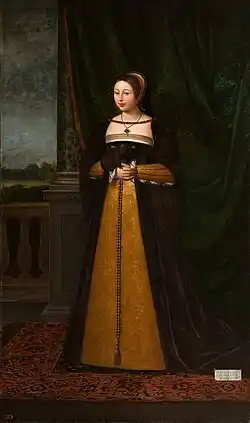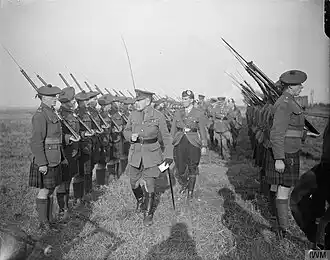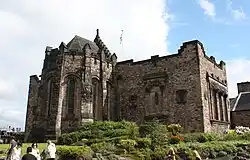
Scottish military records are records which have been produced by various armed forces in Scotland over the last millennium. Although it is a part of the United Kingdom today, Scotland was an independent nation, for the most part, until 1603 when King James VI of Scotland succeeded to the English throne, uniting England and Scotland under the House of Stuart. Scotland was then politically subsumed into England through the Act of Union in 1707. Prior to this gradual process of unification between 1603 and 1707, Scotland’s military was completely independent, while even after the emergence of Great Britain and later the United Kingdom, Scottish military contingents retained their own independent status within the British armed forces, such as the Argyll and Sutherland Highlanders. The records produced by all of these military contingents are a valuable resource for anyone investigating an ancestor who may have served in the Scottish armed forces.[1]
Research your ancestors on MyHeritage
History of military forces in ScotlandHistory of military forces in Scotland

It may seem peculiar when assessing a country that has been politically dominated by its immediate neighbor, England, for several centuries, but Scotland and the Scottish have never actually been fully conquered. The Romans failed to do so in the late first century CE and even built a large wall across northern England, known as Hadrian’s Wall after the emperor who ordered its construction in order to keep the Caledonians, the Roman name for the inhabitants of Scotland, out of their provinces.[2] Successive English rulers during the High Middle Ages (1000–1300) and the late medieval period (1300–1500) tried and generally failed to conquer Scotland.[3] In the end, it was the marriage of Margaret Tudor, sister of King Henry VIII, to King James IV which led to Scotland becoming politically subsumed into England, as her great-grandson, King James VI of Scotland, succeeded as King James I of England in 1603. This united England and Scotland under one monarch and the Act of Union of 1707 then united the crowns into Great Britain. Thus, the Scottish military has been much more successful over the centuries than one would think.[4]
Prior to the events of 1603, the Scottish military was independent entirely of England and was usually allied with the French in what was known as the Auld Alliance against the English. After the thrones of England and Scotland were united under one ruler in 1603, the Scottish army retained its own independence. Hence, in the late 1630s, Scottish armies began the destructive Wars of the Three Kingdoms (1639–1653) in Britain and Ireland by invading England during the Bishops’ Wars after King Charles I of England tried to enforce Episcopalianism on his Scottish subjects. The conflicts of the mid-seventeenth century would be the last time a united Scottish army opposed the centralizing control of London within Britain.[5]

Following the Act of Union in 1707, Scottish regiments began to form a core part of the increasingly professionalized British army. One such was the Royal Scots regiment, which dated back to 1633 in one form of another.[6] The Queen’s Own Cameron Highlanders were formed in 1793 at the beginning of British involvement in the French Revolutionary and Napoleonic Wars. This came just a few years after the formation of the Stirlingshire Regiment of Foot, while additional units which have played a major role in the British armed services in modern times were formed in the nineteenth century, notably the Gordon Highlanders, established in 1881 out of existing Scottish units.[7] Over a million Scots served during the world wars and other clashes of the twentieth century.
Where to find Scottish military forces recordsWhere to find Scottish military forces records
Records pertaining to Scottish military forces are found in numerous archives in the United Kingdom. There are virtually no systematic army records extant for the period prior to the seventeenth century, as the kind of centralized army bureaucracy which exists within militaries today did not apply in late medieval times. This aside, there are occasional records within the wider collections of the National Records of Scotland and the National Archives of the United Kingdom in London that reveal details about the Scottish wars of independence in the fourteenth century or the Anglo-Scottish wars of the fifteenth and sixteenth centuries.[8] Examples include the Registers of the Scottish Privy Council, extensive notes made by clerks of the governing body of Scotland on the day-to-day deliberations of the Privy Council. One of the key concerns of any early modern government was organizing defenses and supplies for the armed forces, so the Registers often reveal a lot about military service in Scotland.[9]
Things become much concrete from the seventeenth century onwards. There are a number of muster rolls for Scottish military retinues extant for the 1640s during the Wars of the Three Kingdoms (the English Civil Wars within England itself). There are similar muster rolls that have survived for the second half of the seventeenth century, particularly the period of the late 1680s and early 1690s during the Glorious Revolution (1688) and the Nine Years’ War (1688–1697). A large number of these musters have been published in Charles Dalton’s The Scots Army, 1661–1688.[10]

Records for the period following the Act of Union in 1707 become much more numerous as the British army became much more professionalized and then expanded greatly as the British Empire grew to cover much of the world in the nineteenth century. For the nineteenth and twentieth centuries there are individual service records, regimental records, recruitment records, treasury vouchers and much else besides that shed light on servicemen. The vast majority of these records are held centrally in the National Archives of the United Kingdom at Kew in London. Many Scottish military records, such as the record of some 185,000 Scots who died during the two world wars inscribed on the Scottish national War Memorial at Edinburgh Castle, are available through MyHeritage.[11]
What can be found in Scottish military forces recordsWhat can be found in Scottish military forces records
The level of information contained in military records differs considerably depending on the time period in question. For the seventeenth century muster rolls, these are not always complete listings of all soldiers and there is a far better chance of identifying an ancestor within them if he was an officer of some kind. Little more than the name, rank and some slim details of where his unit was in action will be found in such records.
More detail will be found in eighteenth and early nineteenth-century records, but it is really only from the mid-nineteenth century onwards that military records start to contain a substantial amount of information about individual soldiers. By the twentieth century, veteran records will contain information like a soldier’s date of birth, family upon enlistment, what occupation he might have had prior to enlisting or, in the case of the World Wars, being conscripted, and address at that time.
These records often contain information that will not be found in other demographic records like birth certs and marriage records. For instance, military records produced for Scotsmen during the First World War and Second World War will often give some brief details on the physical characteristics of the soldier in question and elements of his general health. Consequently, Scottish military records can often reveal nuanced information about an ancestor.[12]
See alsoSee also
Explore more about Scottish military recordsExplore more about Scottish military records
- Scotland, National War Memorial records collection on MyHeritage
- United Kingdom, War Memorials, 1914-1949 records collection on MyHeritage
- Commonwealth War Graves, 1914-1921, 1939-1947 records collection on MyHeritage
- Finding Evidence of Kinship in Military Records at Legacy Family Tree Webinars
References
- ↑ Edward M. Spiers, Jeremy Crang and Matthew Strickland (eds), A Military History of Scotland (Edinburgh, 2012).
- ↑ https://www.historic-uk.com/HistoryUK/HistoryofScotland/Romans-in-Scotland/
- ↑ https://www.historic-uk.com/HistoryUK/HistoryofScotland/The-AngloScottish-Wars-or-Wars-of-Scottish-Independence/
- ↑ https://scottishhistorysociety.com/the-union-of-1707-the-historical-context/
- ↑ https://www.english-heritage.org.uk/learn/histories/the-english-civil-wars-history-and-stories/
- ↑ https://www.nam.ac.uk/explore/royal-scots
- ↑ https://www.gordonhighlanders.com/1881-1901-late-victorian-era/
- ↑ https://www.nationalarchives.gov.uk/help-with-your-research/research-guides/medieval-early-modern-soldiers/
- ↑ https://www.nrscotland.gov.uk/research/research-guides/research-guides-a-z/privy-council-records
- ↑ Charles Dalton, The Scots Army, 1661–1688 (London, 1988).
- ↑ https://www.bbc.co.uk/news/uk-scotland-46124327
- ↑ https://www.nrscotland.gov.uk/research/research-guides/research-guides-a-z/military-records

